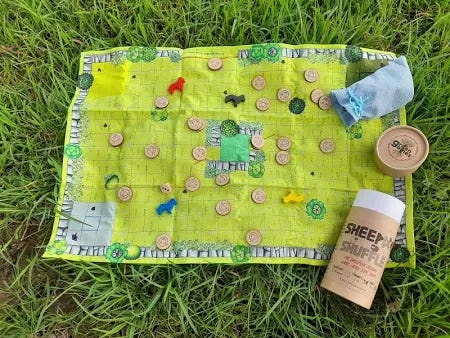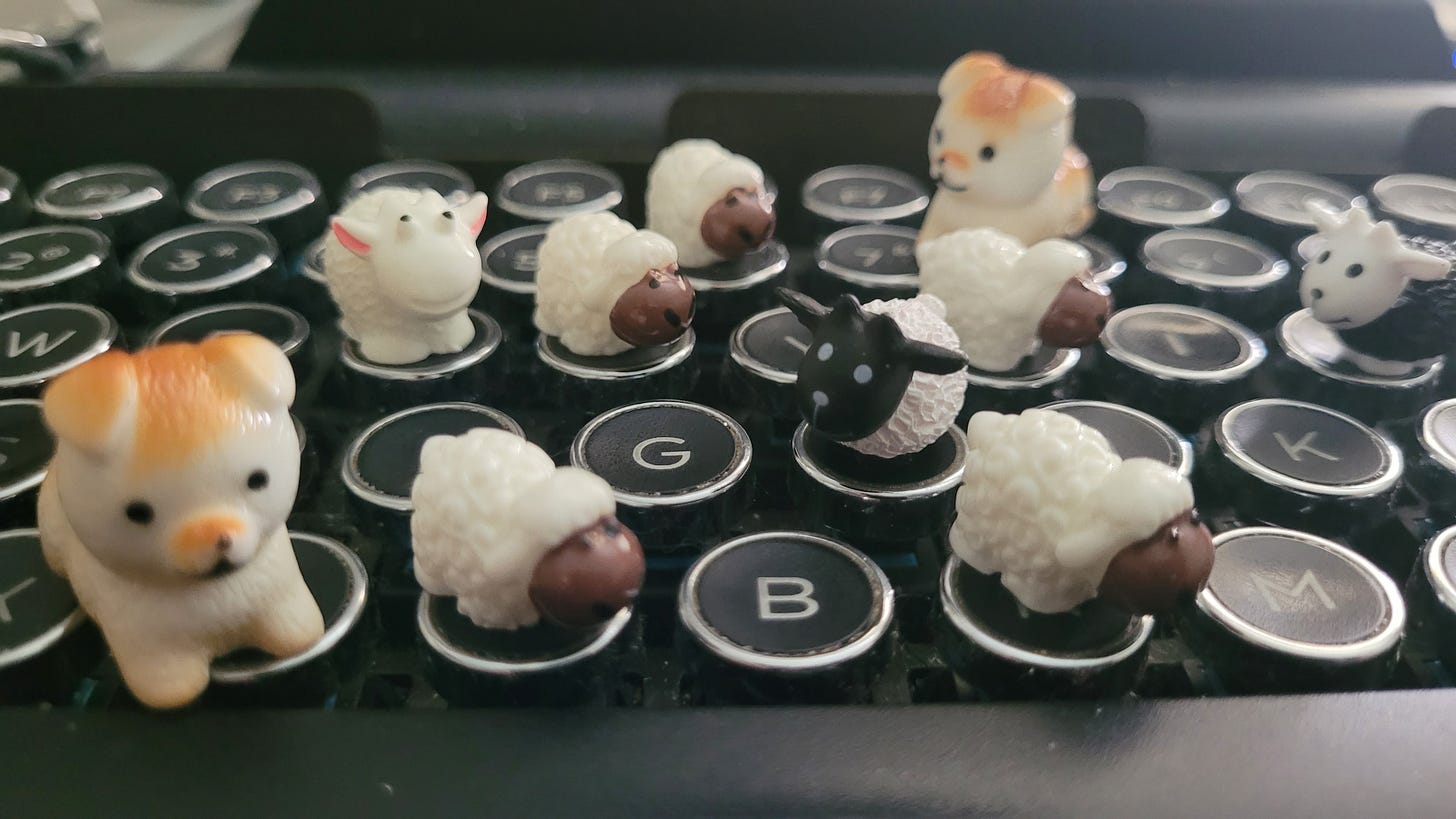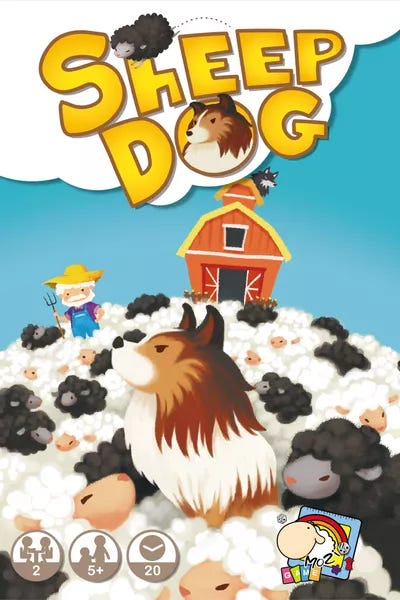Vacations often result in board-game ideas because my mind is idle and we’re playing more games than usual. These are not ideas I usually pursue.
When my daughter was little, we used to create and play our own board games. One with a Simpsons theme was particularly successful (with us—as we were the only two people who ever played these games), but since then, the ideas have just stayed ideas. This time, I’ve hit upon something intuitive and fun. The concept is simple but creates interesting game play—I think. To be sure, all of this has to emerge from my head and actually be played.
It also helps to be inspired by those who have come before. Christopher Schmitz is someone I’ve followed since our critique group days, and he’s been using Kickstarter for books and games. Check out what he’s been up to.
It’s hard to be certain how much psychological sway something like that has on pushing us forward. We see what others are doing on Substack, and it urges us to attempt more, achieve more. Community inspires.
This particular inspiration fuels a game called Stock Dogs, a variant term for herding dogs or sheep dogs. I was surprised to discover how many games have a sheepdog theme. Their popularity made me nervous at first, but thankfully, none of them do what my game does.
I think I’ve hit upon something special, and I’d like to talk about it.
This article is part of Literary Salon, issue #1. Click on the link to check out the rest of the issue, which will continue as a work-in-progress until May, 21st 2025.
Developing Stock Dogs
While waiting for all the pieces for the prototype to arrive so we can begin play testing, I’ve been obsessively searching for better sources or better solutions for the more expensive parts of the game. My white whale has been a fence. The game requires five fence pieces, and my best solution had cost $1 each, unless I wanted to use a plastic Lego-like piece that looked good but would standout as cheap among the resin pieces that make up the rest of the game. The other night, I found and ordered what may be my final solution.
I don’t regret my time spent shopping for a tiny resin fence. This is the means by which my imagined board game will become something tangible and real.
My intention is to build the game from pre-existing, cute, quality pieces bought in bulk. You can see a set of dogs and four types of sheep in the picture below.
The various dog and sheep pieces are made from resin and are intended for fairy gardens. People also buy them to hide around the house where their loved ones will find them. These loved ones must not be below the age of three, because the pieces are a choking hazard. I like that they’re cute and fun before play ever begins.
Normally, that’s not what you do when putting together a board game. You pay to have a thousand inexpensive, original pieces made. Here’s an example from a game called Sheepdog Shuffle:

It’s expensive to produce those inexpensive little pieces!
I haven’t been able to find rules for Sheepdog Shuffle, but it’s a dice-rolling game, which mine is not. Other than the fact that this board is a standard grid, the basic concept looks similar to mine. The dogs are herding sheep and gathering them in the pen—but that’s where the similarities stop.
This is a mock-up of my game board. I’m using it to help visualize piece movement during a turn played on Stock Dogs:
For three weeks, game rules and piece movement were tested in my head, but that can only go so far. By playing out options on my computer screen, I could understand the interplay between pieces much better.
Excuse the roughness. This was originally meant for my eyes only.
I’d originally wanted to call the game Sheepdogs, but not only is the name taken, there are far too many variations using the term. I like the sound of Stock Dogs. It makes me think of stock car racing.
Here’s the very cute cover of the game that took the name Sheep Dog before I could:
The game has even less in common with my own, however:

These pieces are cute, but there’s nothing here to entice adult game play. Is that too harsh? There’s nothing to entice me.
I first imagined the game while playing Catan, which is currently our favorite game and uses both cards and dice. No particular mechanism is better than another, and I don’t want to inadvertently suggest that in my excitement. I’m just exited that my sheepdog game evolved into something resembling an abstract strategy game—minus the abstraction.
The first concept was more of a management game, but as I imagined the movement of the pieces and the aspects that would increase its fun factor, the complicated aspects fell away until I was left with nothing but a dog and some sheep and the interplay of their movement. Clean and classic.
It will come as no surprise to authors that a debate rages in the board-game community over “proper” process, whether one should start with a theme or the mechanics. The winning consensus appears to be that it’s a stupid debate.
A theme can take a game in a myriad of directions. There are so many variations of sheep and sheepdog games. I’d never heard of any of these until I started my research. Some look interesting.
What distinguishes one from the other is the genre of the game, it’s goal, and the player mechanics. It’s inevitable that games will resemble one another, and the key is finding those ways to set your game apart.
The key inspiration for the mechanics of Stock Dogs comes from the home rules I used when playing Chinese checkers. The official rules require you to be adjacent to a piece to jump, but I played a variation where you could jump at a distance, as long as you had equidistant spaces on both sides. I used that as the primary mechanic for the sheep with the additional restriction that sheep are only motivated to move by the placement of a dog, which also dictates the direction the sheep can move.
The board I chose is sometimes used as a variant of three-way chess.
My intent is to offer the game in a zippered tote bag with the board printed on the bag. Of course, I won’t know if that works until I have the prototype, and it’s not scheduled to arrive for another ten days or so.
I’m operating outside the usual path set by manufacturers who supply the means of typical board game development. So, as I continue to chronicle the game’s development, there won’t be much insight into that side of the industry—unless someone knowledgeable wants to write a guest article.
Any takers?
— Thaddeus Thomas







This is fascinating and exciting although the board design beta is wholly dissonant with the bucolic essense of sheep filled pastures. Im also struggling to see what the object of the competitive aspect is... am keen to see things develop!
in terms of names...maybe using DAWG might avoid clashes?
in the UK our MOST infamous collie - well iF you're my age - was called SHEP and the catchphrase GET DOWN SHEP! would stir some memories.
how about
RAM beau
I go ewe go
Flokt
Flock n Load
Herdy Gurdy
Re-penned
Woolpack
Colliewobble
I love this sort of thing!
good luck Thaddeus! if ewe need a beta tester...
Sounds like fun!
The process debate is dumb. I almost always start with a "feel" and go from there. Sometimes it's a piece of art or music that inspires that feel. Post updates on the game's progress!